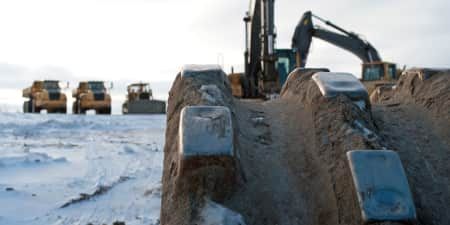The Ins and Outs of Building in Antarctica
Construction in the winter is already hard enough. Can you imagine what it would take to build in the Antarctic? To no one's surprise, it is an incredibly difficult task and takes years and years of planning. There are a couple of reasons for this, including the Antarctic Treaty, the logistics of getting to Antarctica, and then the actual construction that needs to take place.
How The Antarctic Treaty Affects Construction
The Antarctic Treaty is an agreement between countries across the world that it should be treated as a peaceful, neutral territory to be shared by everyone. If any country or nation wants to build on the continent, the buildings must be used strictly for scientific purposes. Any scientific findings made in Antarctica must be shared publicly.
Once you are finished with your studies, the treaty states that all structures should be removed from the land and returned to the way it was originally found. Because it would be very expensive and difficult to remove these structures, very few countries have ever fully closed their stations and buildings in Antarctica. Instead, they scale back the number of people living there.
The Logistics of Getting to Antarctica
Possibly the biggest challenge of building in Antarctica is arriving there first. Getting everything you need to the Antarctic requires cargo ships and unfortunately, due to the ice and hours of sunlight, there are only a few months of the year when accessing Antarctica and construction is possible. This makes the margin for error in the planning process minimal. Everything, including the staff and all their food, equipment, materials, scientific necessities and office supplies, etc. needs to be on that boat.
Therefore, planning before the ship ever gets loaded can take years. From the design of the buildings, figuring out what needs to be pre-fabricated, sending extra parts in case of damages, and bringing all the right attachments for the equipment, having things replaced quickly is not possible. That's why planning thoroughly is increasingly important when working in the Antarctic.
Building in Antarctica: The Jang Bogo Antarctic Research Station
The Weather
Now that you're there, it's time to get to work. Unfortunately, the weather can be one of the biggest barriers to construction. According to reports, blizzards in Antarctica can last up to 10 days and winds can hit 40 miles per hour (or 65 kilometers per hour). This delays construction by a substantial amount, especially when there are already so few working days to begin with.
On top of that, the weather in the Antarctic can get incredibly cold, even in those summer months when the temperature rarely breaks zero degrees Fahrenheit.
The Buildings
A great example of how the construction process works in Antarctica is from the team that built the South Korean Antarctic Research Station, Jang Bogo. When they arrived to build the project and prepare the land, they quickly learned that an excavation project that would only take two or three hours in South Korea could take two or three days in the Antarctic.
Beyond that, the engineering of a building is incredibly important. Because the ground can be so frozen and snowfall can be a nuisance, they made sure the station they designed was elevated. This would help reduce the impact of snowfall in getting into the station and would also allow wind not to impact the building as much. They also designed the building to be a triangle shape with dimpled roofs, much like a golf ball, to reduce the impact of strong winds that come from every direction.
The Equipment
Before getting to Antarctica, all the machines have to be deeply cleaned and all mold, dust, dirt, etc must be removed. In alliance with the Antarctic Treaty, no foreign species should be in contact with the continent to reduce any impact on the land.
Another important element of working in freezing weather is protecting your equipment. Cold-starting machines can damage them so bringing block heaters or idling them was necessary. Other concerns like having the right fluids, gases, and oils in the machine to make sure the machines perform without freezing. And when the weather was harshest, trying to protect them from the strong winds, ice, and snow was useful in prolonging the lifespan of the equipment.
The People
One of the first things to do is build a temporary shelter for the laborers. While some may head back to the ship, sometimes people will need to heat up or need urgent protection from the wind and harsh weather. Another vital aspect of being safe on the job and protecting the people is through proper layering and wearing the right workwear and gear. Working in cold climates can lead to an increased risk of hypothermia, frostbite, and illness so making sure staff feel warm and protected is important to the success of the project.
Building in Antarctica is not a task for the faint of heart. It takes a lot of preparation, logistical knowledge, execution, and courage. However, it is necessary for the future of scientific knowledge. And while there is no specific population of Antarctica, because everyone technically is a visitor from a foreign country, there are many small Antarctica cities, or bases, where people live and prolific research is being completed, depending on the time of year.

